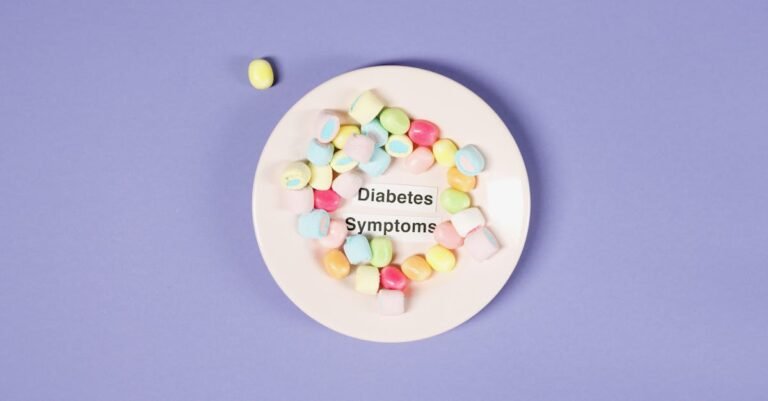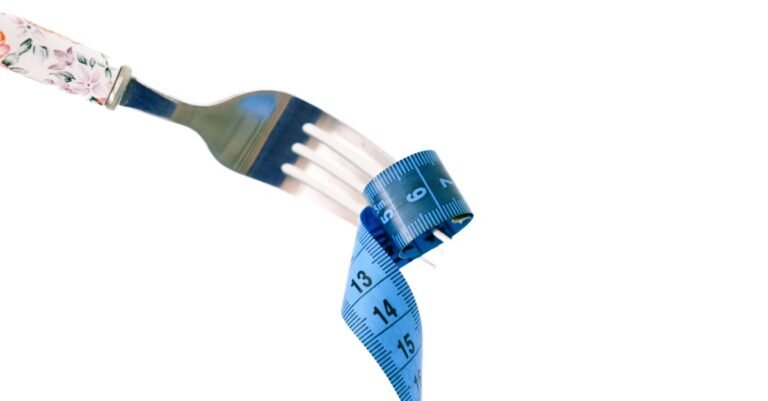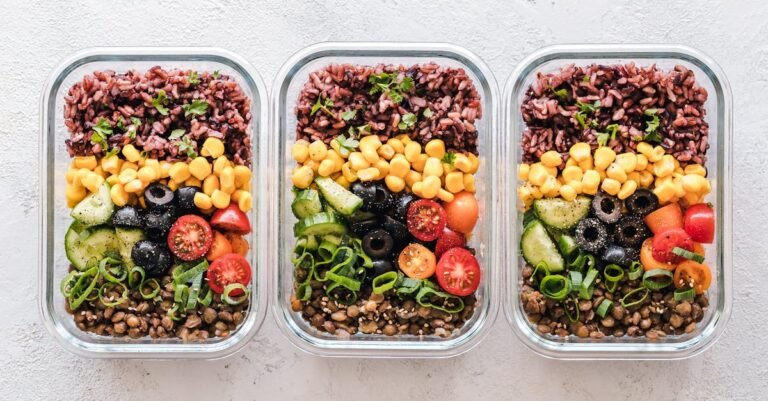- How To Read Nutrition Labels Correctly: Your Ultimate Guide
- Why Bother Reading Nutrition Labels Anyway?
- Decoding the Nutrition Facts Panel: Step-by-Step
- Beyond the Numbers: Ingredient List & Allergen Info
- Putting It All Together: Practical Tips & Tricks
- Conclusion: Become a Nutrition Label Ninja!
- Frequently Asked Questions (FAQs)
- Q1: Is the %DV based on my specific calorie needs?
- Q2: What’s the difference between “Sugar” and “Added Sugars”?
- Q3: Do organic foods still need label reading?
- Q4: How do I read labels for foods without standard packaging (like from a bakery)?
- Q5: Are “net carbs” listed on the official Nutrition Facts panel?
How To Read Nutrition Labels Correctly: Your Ultimate Guide
Let’s be real, walking down the grocery aisle can feel like navigating a maze. Bright packages scream promises – “Low Fat!”, “High Fiber!”, “All Natural!” – but what does it all *really* mean? Tucked away on the back or side of almost every packaged food is the key: the Nutrition Facts label. But sometimes, deciphering that black and white box feels like reading a foreign language. Sound familiar? You’re not alone! Many of us glance at it, maybe check the calories, and move on. But what if I told you that mastering this little label could be a game changer for your health, your waistline, and your overall understanding of what you’re putting into your body? Ready to unlock the secrets hidden in plain sight? Let’s dive in and learn how to read nutrition labels like a seasoned pro!
Why Bother Reading Nutrition Labels Anyway?
Okay, so maybe you’re thinking, “Is it really worth the effort?” Life’s busy, and adding another task to the grocery trip might seem daunting. But trust me, spending just a few extra seconds scanning that label offers huge benefits that go way beyond just counting calories.
Beyond Calories: Understanding Your Food’s Story
Calories are important, sure, but they only tell a tiny part of the story. Think of the nutrition label as the food’s biography. It reveals the character of what you’re about to eat. Is it packed with beneficial nutrients like fiber and vitamins, or is it hiding villains like excessive sodium, unhealthy fats, and sneaky added sugars? Two snacks might have the exact same calorie count, but one could offer sustained energy and essential nutrients, while the other provides empty calories that leave you feeling hungry and sluggish an hour later. Reading the label helps you understand the *quality* of the calories you’re consuming, not just the quantity.
Making Informed Choices for Your Health Goals
Whether you’re managing a health condition like diabetes or high blood pressure, trying to lose weight, aiming to build muscle, or simply striving for a healthier lifestyle, the nutrition label is your indispensable tool. Need to watch your sodium intake? The label tells you exactly how much is in a serving. Trying to increase your fiber? Check the %DV! Managing sugar intake? You can see not just total sugars, but crucially, *added* sugars. It empowers you to compare products side by side and choose the options that best align with your specific dietary needs and health objectives. It transforms you from a passive consumer into an informed decision maker about your own well being.
Decoding the Nutrition Facts Panel: Step-by-Step
Alright, let’s get down to the nitty gritty. The Nutrition Facts panel might look intimidating at first glance, with all its numbers and percentages. But if you break it down section by section, it becomes much less mysterious. Think of it like assembling furniture – follow the steps, and you’ll have a solid understanding in no time!
Step 1: Start with Serving Size & Servings Per Container
This is arguably the MOST crucial starting point, yet it’s often overlooked. Everything else on the label – the calories, the fat, the sodium – refers to ONE serving, not necessarily the entire package. Ignore this, and you could easily consume double or triple the calories and nutrients listed without realizing it!
The Sneaky Truth About Serving Sizes
Here’s where things can get tricky. Serving sizes are standardized based on amounts people *typically* consume, according to regulations. However, these standardized amounts might not reflect what *you* actually eat or what seems like a reasonable portion for that specific food. Have you ever looked at the serving size for a small bag of chips or a bottle of soda and thought, “Seriously? Who only eats *that* much?” That tiny bag might contain 2.5 servings! That “single serving” iced tea bottle might list 2 servings. Manufacturers know this, and sometimes, smaller listed serving sizes can make the calorie and fat numbers look more appealing at first glance.
Adjusting for Your Actual Portion
So, the golden rule? Always check the “Servings Per Container” right below or next to the “Serving Size.” Then, be honest with yourself about how much you plan to eat. If you know you’re going to eat the entire package, and it says there are 3 servings per container, you need to multiply all the numbers on the label (calories, fat, sodium, etc.) by three! If you eat half the package containing two servings, you multiply by one (or just use the numbers as listed, since you ate one serving). This simple multiplication step is fundamental to accurately understanding your intake.
Step 2: Check the Calories (and Calories from Fat – Is it Still Relevant?)
Calories are a measure of energy. The number of calories listed tells you how much energy you get from one serving of that food. Your individual calorie needs vary based on age, sex, activity level, and health goals.
You might notice some older labels list “Calories from Fat” right below the main calorie count. While the *type* of fat you eat is definitely more important than the total amount of fat calories (more on that soon!), this line item has largely been removed from newer label formats. Why? Because research has shown focusing on saturated and trans fats is more critical for health than just the calories derived from all fats combined. So, while calories matter for weight management, don’t stop there!
Calorie Context: More Than Just a Number
Remember our earlier point? Calories need context. A 200 calorie serving of almonds provides healthy fats, fiber, and protein, keeping you full and satisfied. A 200 calorie serving of sugary candy provides mostly sugar and few, if any, beneficial nutrients, potentially leading to an energy crash later. Use the calorie count as a guide, but always consider it alongside the other nutrient information to gauge the food’s overall quality and how it fits into your daily energy needs.
Step 3: Limit These Nutrients (The “Uh-Oh” Section)
This section of the label typically highlights nutrients that many people consume too much of, which can negatively impact health over time. Think of these as the ones you generally want to keep an eye on and minimize.
Total Fat, Saturated Fat, and Trans Fat Explained
Total Fat: This includes all types of fat – saturated, trans, monounsaturated, and polyunsaturated. While fat is an essential nutrient needed for energy and absorbing certain vitamins, not all fats are created equal.
Saturated Fat: Found primarily in animal products (meat, dairy) and some tropical oils (coconut, palm). Consuming too much saturated fat can raise LDL (“bad”) cholesterol levels, increasing the risk of heart disease. Aim to keep your intake low.
Trans Fat: This is the one you really want to avoid as much as possible! Most trans fats are artificially created through a process called hydrogenation (look for “partially hydrogenated oils” in the ingredient list – a major red flag!). They raise bad LDL cholesterol AND lower good HDL cholesterol, significantly increasing heart disease risk. The goal should be 0 grams of trans fat per serving. Be aware: regulations allow companies to list “0g trans fat” if the amount per serving is less than 0.5 grams. If you see partially hydrogenated oil in the ingredients, even with 0g listed, there might still be trace amounts that can add up if you eat multiple servings.
Good fats (monounsaturated and polyunsaturated, found in things like avocados, nuts, seeds, olive oil, and fatty fish) aren’t usually required to be listed separately unless the manufacturer makes a claim about them, but they are included in the “Total Fat” number.
Cholesterol and Sodium: Keeping Tabs
Cholesterol: Found only in animal products. While dietary cholesterol was once heavily emphasized, current research suggests that for most people, saturated and trans fats have a bigger impact on blood cholesterol levels than dietary cholesterol itself. However, foods high in dietary cholesterol are often also high in saturated fat, so it’s still wise to be mindful, especially if you have high cholesterol or heart disease risk.
Sodium: We need some sodium, but most Americans consume far too much, primarily from processed and restaurant foods. High sodium intake is linked to high blood pressure, a major risk factor for heart disease and stroke. Pay close attention to this number, especially in canned goods, soups, frozen meals, savory snacks, and condiments. You might be shocked at how quickly it adds up!
Step 4: Get Enough of These Nutrients (The “Good Stuff”)
Below the “limit these” section, you’ll find nutrients that are beneficial for health, and ones many people don’t get enough of. Actively look for foods higher in these!
Dietary Fiber: Your Gut’s Best Friend
Fiber is fantastic! It aids digestion, helps keep you regular, can lower cholesterol levels, helps control blood sugar, and promotes feelings of fullness (which can help with weight management). Found in fruits, vegetables, whole grains, beans, and legumes. Most people fall far short of the recommended daily intake (around 25g for women, 38g for men). Look for foods with a higher %DV for fiber.
Vitamins & Minerals: The Micronutrient Powerhouses
Labels are required to list Vitamin D, Calcium, Iron, and Potassium. Why these four? Because they are considered “nutrients of public health concern” – meaning many people don’t get enough of them, and deficiencies can lead to health problems.
* Vitamin D: Crucial for bone health (helps absorb calcium) and immune function.
* Calcium: Essential for strong bones and teeth, muscle function, and nerve signaling.
* Iron: Needed to carry oxygen in the blood; deficiency causes anemia.
* Potassium: Helps maintain healthy blood pressure and fluid balance; counteracts some of the harmful effects of sodium.
Manufacturers can voluntarily list other vitamins and minerals as well. Higher percentages for these are generally a good sign!
Step 5: Understanding Percent Daily Value (%DV)
Ah, the %DV column on the right. This can seem confusing, but it’s actually a super helpful shortcut, especially for comparing products quickly.
What Does %DV Really Mean? (5/20 Rule)
The Percent Daily Value (%DV) shows how much a nutrient in *one serving* of the food contributes to a total daily diet. It’s based on a generic 2,000 calorie diet for healthy adults. Your own calorie needs might be higher or lower, but the %DV still provides a useful frame of reference.
Here’s a handy guideline – the 5/20 Rule:
* 5% DV or less of a nutrient per serving is considered low.
* 20% DV or more of a nutrient per serving is considered high.
Use this rule to your advantage:
* Aim for low %DV (5% or less) for nutrients you want to limit, like saturated fat, trans fat, sodium, and added sugars (though added sugars don’t always have a %DV listed yet, aim for low grams).
* Aim for high %DV (20% or more) for nutrients you want to get enough of, like dietary fiber, vitamin D, calcium, iron, and potassium.
Using %DV to Compare Products
This is where %DV really shines. Let’s say you’re choosing between two types of breakfast cereal. Cereal A has 10% DV for fiber per serving, while Cereal B has 25% DV for fiber. Using the 5/20 rule, you can quickly see that Cereal B is a much higher source of fiber. Similarly, if you’re comparing canned soups, one might have 15% DV for sodium, while another has 40% DV. The %DV makes it easy to spot the lower sodium option at a glance, even if the serving sizes are slightly different (though always double check serving sizes!).
Beyond the Numbers: Ingredient List & Allergen Info
The Nutrition Facts panel gives you the quantitative breakdown, but don’t stop there! The ingredient list and allergen information provide crucial qualitative insights.
Reading Between the Lines: The Ingredient List
Ingredients are listed in descending order by weight. That means the first ingredient listed is the one present in the largest amount, and the last ingredient is present in the smallest amount. This is incredibly revealing!
Want to know if that “whole wheat” bread is truly whole grain? Check the first ingredient. It should say “whole wheat flour” or another whole grain. If the first ingredient is “enriched wheat flour” or just “wheat flour,” it’s not primarily whole grain, even if whole wheat flour appears further down the list.
Generally speaking, shorter ingredient lists with recognizable, whole food ingredients are often preferable to long lists full of chemical sounding names, preservatives, and artificial additives. If the first few ingredients are sugar, refined flour, or unhealthy fats, it might be a sign to reconsider.
Spotting Hidden Sugars and Unwanted Additives
Sugar hides under many different names! While the “Added Sugars” line on the Nutrition Facts panel is helpful, scanning the ingredient list can uncover various forms. Look out for words ending in “ose” (like sucrose, glucose, fructose, dextrose, maltose), as well as high fructose corn syrup, corn sweetener, cane juice, evaporated cane juice, fruit juice concentrate, honey, maple syrup, molasses, and agave nectar. Seeing multiple types of sugar listed, even if none are the very first ingredient, can indicate a very high sugar content overall.
Similarly, be aware of artificial sweeteners, colors, flavors, and preservatives if those are things you prefer to avoid. The ingredient list tells all.
Allergen Warnings: Crucial Information
For individuals with food allergies, this section is non negotiable. Regulations require manufacturers to clearly state if a food contains any of the major food allergens (milk, eggs, fish, shellfish, tree nuts, peanuts, wheat, soybeans, and sometimes sesame). This information is often listed below the ingredient list, sometimes prefaced with “Contains:”. Some labels also include voluntary “May contain” statements if the food is processed in a facility that handles allergens, indicating a risk of cross contamination.
Putting It All Together: Practical Tips & Tricks
Okay, you’ve learned the components. Now, how do you apply this knowledge quickly and effectively in the real world?
Comparing Similar Products Like a Pro
Don’t just grab the first brand you see. Take 30 seconds to compare labels on similar items (e.g., different brands of yogurt, bread, or canned beans).
1. Equalize Serving Sizes: If serving sizes differ slightly, mentally adjust or use the %DV for easier comparison.
2. Prioritize Your Needs: What’s most important to you? Lower sodium? Higher fiber? Less added sugar? Focus on comparing those specific nutrients using the %DV or grams.
3. Check Ingredients: Look beyond the numbers. Does one option have simpler, more wholesome ingredients?
This quick comparison can help you find the healthiest option within your budget.
Don’t Be Fooled by Front-of-Package Claims
The front of the package is marketing real estate! Claims like “Made with Real Fruit,” “Good Source of Vitamin C,” “Low Fat,” or “Multigrain” can be enticing but sometimes misleading.
* “Made with Real Fruit” might mean there’s a tiny amount, but the main sweetener is still corn syrup.
* “Low Fat” products sometimes compensate with extra sugar or sodium to improve taste.
* “Multigrain” simply means more than one type of grain is used, but they might all be refined grains unless it explicitly says “whole grain.”
Always turn the package over and verify these claims using the Nutrition Facts panel and the ingredient list. That’s where the real truth lies.
Conclusion: Become a Nutrition Label Ninja!
Whew! That was a lot of information, wasn’t it? But think about it – you now possess the knowledge to decode those seemingly complex food labels. It’s not about being perfect or obsessing over every single number. It’s about empowerment. It’s about making conscious, informed choices that align with *your* health goals and preferences. Start small. Maybe focus on comparing the sodium in your favorite soups next time you shop, or check the added sugars in different breakfast cereals. With a little practice, scanning and understanding nutrition labels will become second nature – a quick, easy step that makes a huge difference in navigating the grocery store and fueling your body well. You’ve got this! Go forth and be the nutrition label ninja you were meant to be!
Frequently Asked Questions (FAQs)
Q1: Is the %DV based on my specific calorie needs?
A: No, the %DV (Percent Daily Value) is based on a general 2,000 calorie daily diet. Your individual calorie and nutrient needs might be different depending on your age, sex, activity level, and health status. However, the %DV is still a very useful tool for quickly assessing whether a serving of food is high or low in a particular nutrient and for comparing different products, regardless of your personal calorie target.
Q2: What’s the difference between “Sugar” and “Added Sugars”?
A: “Total Sugars” includes both naturally occurring sugars (like lactose in milk or fructose in fruit) and added sugars. “Added Sugars” refers specifically to sugars and syrups put into foods during processing or preparation (like sucrose, dextrose, high fructose corn syrup, honey added to cereal, etc.). Health experts recommend limiting added sugars, as they provide calories but few nutrients and excessive intake is linked to health problems. The separate “Added Sugars” line, now mandatory on most labels, makes it easier to track this.
Q3: Do organic foods still need label reading?
A: Absolutely! “Organic” refers to how the food was grown or produced (e.g., without certain synthetic pesticides or fertilizers). It doesn’t automatically mean the food is low in calories, sugar, sodium, or saturated fat, or high in fiber or vitamins. An organic cookie is still a cookie! You should still check the Nutrition Facts panel and ingredient list on organic products to understand their nutritional content and ensure they fit your health goals.
Q4: How do I read labels for foods without standard packaging (like from a bakery)?
A: This can be trickier. Many larger bakeries, delis, or chain restaurants may voluntarily provide nutrition information, either displayed near the food, on their website, or available upon request. For smaller, local businesses or unpackaged items like fresh produce, standardized labels aren’t typically required. In these cases, you’ll need to rely on general nutrition knowledge, estimate portion sizes, or use online nutritional databases or apps to approximate the nutritional content if needed.
Q5: Are “net carbs” listed on the official Nutrition Facts panel?
A: No, “net carbs” is not a term officially recognized or required by the FDA on the standard Nutrition Facts label. It’s often used by manufacturers (especially on low carb products) and typically calculated by subtracting fiber and sometimes sugar alcohols from the total carbohydrates. While “Total Carbohydrate” and “Dietary Fiber” are mandatory listings, you won’t find an official “Net Carbs” line item. If managing carbohydrate intake is important for you (e.g., for diabetes), focus on the “Total Carbohydrate” and “Dietary Fiber” listed on the panel.










